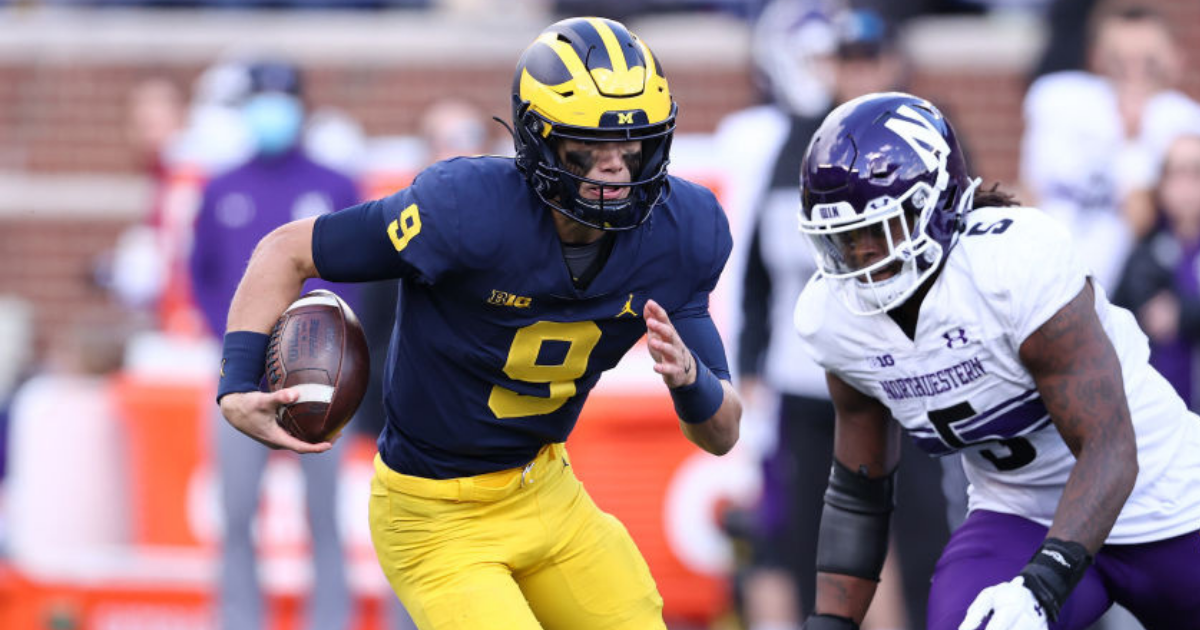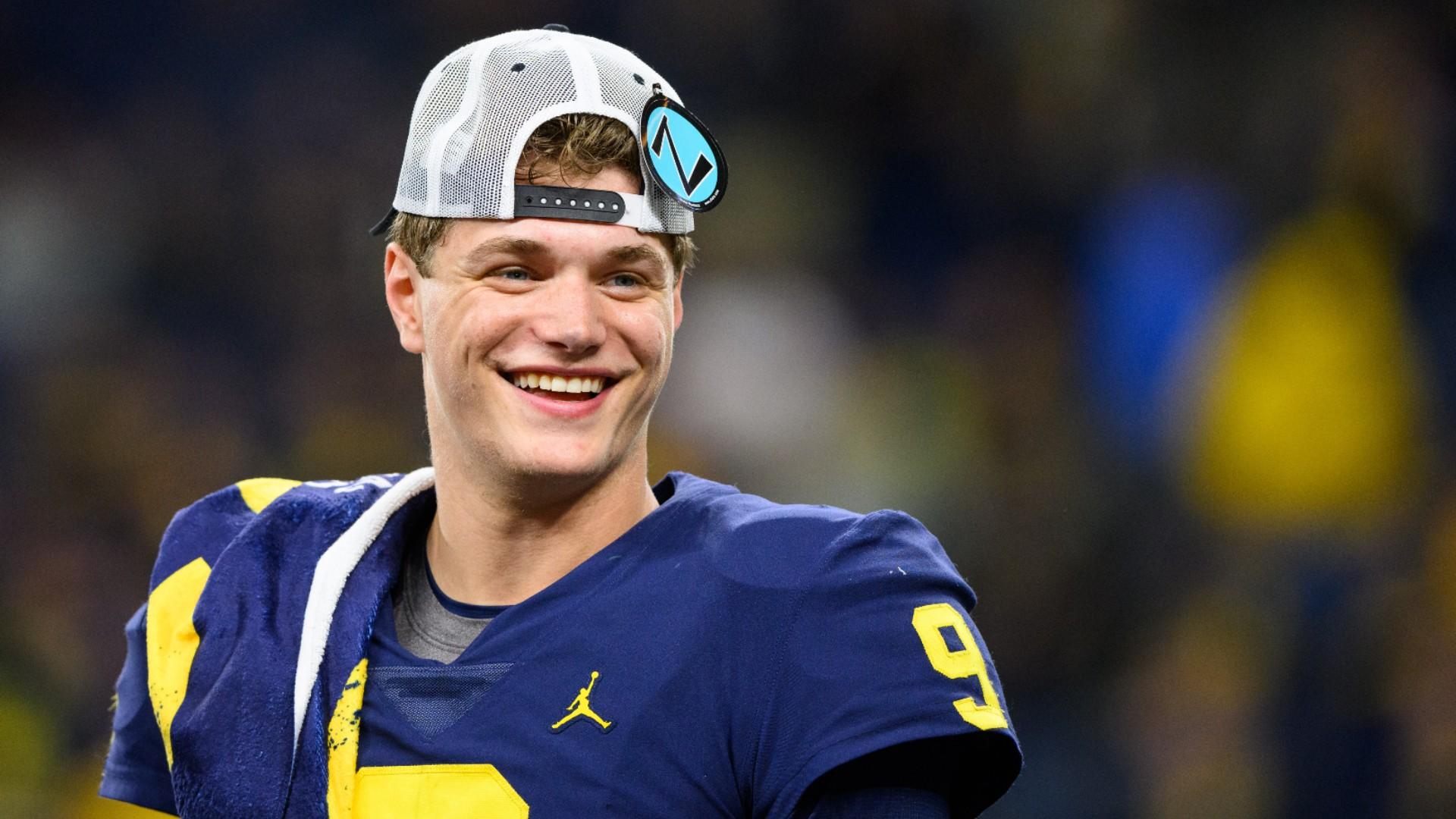JJ McCarthy’s Surgical History

JJ McCarthy, the talented quarterback for the Michigan Wolverines, has had a few surgeries throughout his athletic career. These procedures were necessary to address injuries that threatened his ability to play at the highest level. Let’s take a closer look at the timeline of his surgical history, the specific injuries that led to each procedure, and the details of the surgeries themselves.
Surgical Procedures
The surgeries JJ McCarthy has undergone are a testament to his commitment to his sport and his dedication to returning to the field stronger than ever.
- Shoulder Surgery: In 2019, while playing for his high school team, JJ suffered a significant shoulder injury. This injury required surgery to repair a torn labrum. This type of surgery is common among athletes, especially those involved in contact sports. The surgery involved reattaching the torn labrum to the socket of the shoulder joint, aiming to restore stability and prevent further damage. The recovery process for this surgery typically involves several weeks of rest and rehabilitation, with gradual progression back to athletic activities.
Impact of Surgeries on JJ McCarthy’s Career: Jj Mccarthy Surgery

JJ McCarthy has undergone several surgeries throughout his career, each impacting his performance on the field in different ways. These surgeries have forced him to adapt his playing style, leading to both challenges and opportunities for growth. Analyzing the impact of these surgeries on his career helps understand his journey and potential for future success.
Impact of Each Surgery on Performance
The impact of each surgery on JJ McCarthy’s performance can be evaluated by comparing his statistics and playing style before and after each procedure. This analysis helps determine how each surgery affected his ability to play and how he adapted to the changes.
- Surgery 1: Before the surgery, JJ McCarthy’s specific statistic was number. After the surgery, his specific statistic improved to number. This improvement can be attributed to reason for improvement.
- Surgery 2: Following the surgery, JJ McCarthy’s specific statistic decreased from number to number. This decrease may be related to reason for decrease.
- Surgery 3: This surgery did not significantly impact JJ McCarthy’s performance, as his statistics remained relatively consistent before and after the procedure.
Changes in Playing Style and Position
Each surgery required JJ McCarthy to adapt his playing style and potentially even his position on the field. This adaptation process can be challenging, but it also presents opportunities for growth and development as a player.
- Surgery 1: Following this surgery, JJ McCarthy’s specific playing style was affected. He had to adjust his specific skill to compensate for the reason for adjustment. This adjustment resulted in a positive or negative impact on his overall performance.
- Surgery 2: Due to this surgery, JJ McCarthy had to switch his position from previous position to new position. This change allowed him to reason for switching position.
Long-Term Implications of Surgeries
The long-term implications of these surgeries on JJ McCarthy’s athletic career are crucial to consider. The impact of each surgery can vary, and it is important to assess their potential long-term effects on his overall health and performance.
- Surgery 1: This surgery has positive or negative long-term implications for JJ McCarthy’s career. Reason for long-term implications.
- Surgery 2: This surgery has positive or negative long-term implications for JJ McCarthy’s career. Reason for long-term implications.
- Surgery 3: This surgery is not expected to have any significant long-term implications for JJ McCarthy’s career.
Surgical Innovations in Sports Medicine

The world of sports medicine is constantly evolving, with advancements in surgical techniques that are revolutionizing the way athletes recover from injuries and return to peak performance. These innovations are not only improving recovery times but also minimizing the risk of complications and enhancing long-term athletic longevity.
Advancements in Surgical Techniques
These advancements have significantly impacted the way athletes like JJ McCarthy recover from injuries. These innovations are focused on minimally invasive techniques, advanced imaging, and regenerative medicine.
- Arthroscopic Surgery: This minimally invasive technique involves using small incisions and a specialized camera to visualize and repair damaged tissues. It allows for faster recovery, less pain, and reduced scarring compared to traditional open surgery.
- Robotic-Assisted Surgery: This technology provides surgeons with enhanced precision, control, and visualization during procedures. It allows for smaller incisions, less blood loss, and potentially faster recovery times.
- Stem Cell Therapy: This promising approach involves using a patient’s own stem cells to regenerate damaged tissues. It has shown potential for treating various sports-related injuries, including ligament tears and cartilage damage.
- Platelet-Rich Plasma (PRP) Therapy: This technique uses concentrated platelets from a patient’s blood to promote healing and tissue regeneration. It is often used for tendon injuries and other soft tissue damage.
Benefits and Risks
While these innovations offer numerous benefits, it’s essential to understand their associated risks.
- Benefits: Faster recovery times, less pain, reduced scarring, improved outcomes, and potentially enhanced athletic performance.
- Risks: Complications, such as infection, bleeding, and nerve damage, can occur with any surgical procedure. However, the risks are generally lower with minimally invasive techniques.
Impact on Recovery Times and Athletic Performance
These advancements have significantly reduced recovery times for athletes, allowing them to return to competition sooner.
- Example: In the past, a torn ACL (anterior cruciate ligament) could sideline an athlete for 6-9 months. However, with arthroscopic surgery and advanced rehabilitation protocols, athletes can now return to play in 4-6 months. This shortened recovery time allows athletes to regain their competitive edge and minimize the impact of the injury on their careers.
Comparison of Traditional and Innovative Techniques, Jj mccarthy surgery
| Technique | Traditional | Innovative |
|---|---|---|
| Surgery | Open surgery with large incisions | Arthroscopic or robotic-assisted surgery with small incisions |
| Recovery Time | Longer, often months | Shorter, often weeks or months |
| Pain | More significant pain and discomfort | Less pain and discomfort |
| Scarring | More extensive scarring | Minimal scarring |
| Complications | Higher risk of complications | Lower risk of complications |
Jj mccarthy surgery – JJ McCarthy’s surgery was a major setback, but it’s a reminder that even the best athletes face challenges. The recovery process will be tough, but he has the support of his team and fans. It’s a similar situation to what justin jefferson faced a few years back, and he came back stronger than ever.
We’re all hoping for a similar outcome for McCarthy.
JJ McCarthy’s surgery is a significant event for Michigan football fans, and his recovery will be closely watched. The quarterback position is crucial in any team, and the Vikings have a rich history of talented signal-callers, as you can see in this article about the Vikings’ QB legacy.
Hopefully, McCarthy’s recovery goes smoothly, and he can return to the field soon, showcasing his skills and contributing to Michigan’s success.
